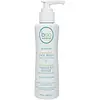What's inside
What's inside
 Key Ingredients
Key Ingredients

 Benefits
Benefits

 Concerns
Concerns

No concerns
 Ingredients Side-by-side
Ingredients Side-by-side

Water
Skin ConditioningSodium Lauryl Glucose Carboxylate
CleansingLauryl Glucoside
CleansingCocamidopropyl Hydroxysultaine
CleansingPolysorbate 20
EmulsifyingBambusa Vulgaris Extract
Skin ConditioningVitis Vinifera Seed Extract
AntimicrobialCamellia Sinensis Leaf Extract
AntimicrobialAloe Barbadensis Leaf Extract
EmollientVaccinium Macrocarpon Fruit Extract
AstringentPunica Granatum Extract
AstringentAroma
Sodium Benzoate
MaskingGluconolactone
Skin ConditioningWater, Sodium Lauryl Glucose Carboxylate, Lauryl Glucoside, Cocamidopropyl Hydroxysultaine, Polysorbate 20, Bambusa Vulgaris Extract, Vitis Vinifera Seed Extract, Camellia Sinensis Leaf Extract, Aloe Barbadensis Leaf Extract, Vaccinium Macrocarpon Fruit Extract, Punica Granatum Extract, Aroma, Sodium Benzoate, Gluconolactone
Water
Skin ConditioningSodium Lauroyl Sarcosinate
CleansingLauryl Glucoside
CleansingGlycerin
HumectantCitric Acid
Buffering3-O-Ethyl Ascorbic Acid
Skin ConditioningPanthenol
Skin ConditioningNiacinamide
SmoothingTocopheryl Acetate
AntioxidantPolyacrylate Crosspolymer-6
Emulsion StabilisingXanthan Gum
EmulsifyingTetrasodium EDTA
T-Butyl Alcohol
PerfumingSodium Benzoate
MaskingPotassium Sorbate
PreservativeIngredients Explained
These ingredients are found in both products.
Ingredients higher up in an ingredient list are typically present in a larger amount.
Lauryl Glucoside sugar- and lipid-based cleansing agent. It is created from glucose and lauryl alcohol.
This ingredient is a surfactant, making it easier to rinse oil, dirt, and other pollutants away.
A British study found lauryl glucoside to cause skin sensitivity for some people. We recommend speaking with a professional if you have concerns.
Other names for this ingredient include "Lauryl Polyglucose", "Lauryl glycoside", and "D-Glucopyranoside".
Learn more about Lauryl GlucosideSodium Benzoate is a preservative. It's used in both cosmetic and food products to inhibit the growth of mold and bacteria. It is typically produced synthetically.
Both the US FDA and EU Health Committee have approved the use of sodium benzoate. In the US, levels of 0.1% (of the total product) are allowed.
Sodium benzoate works as a preservative by inhibiting the growth of bacteria inside of cells. It prevents the cell from fermenting a type of sugar using an enzyme called phosphofructokinase.
It is the salt of benzoic acid. Foods containing sodium benzoate include soda, salad dressings, condiments, fruit juices, wines, and snack foods.
Studies for using ascorbic acid and sodium benzoate in cosmetics are lacking, especially in skincare routines with multiple steps.
We always recommend speaking with a professional, such as a dermatologist, if you have any concerns.
Learn more about Sodium BenzoateWater. It's the most common cosmetic ingredient of all. You'll usually see it at the top of ingredient lists, meaning that it makes up the largest part of the product.
So why is it so popular? Water most often acts as a solvent - this means that it helps dissolve other ingredients into the formulation.
You'll also recognize water as that liquid we all need to stay alive. If you see this, drink a glass of water. Stay hydrated!
Learn more about Water